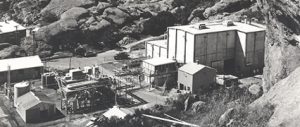Prospects for nuclear power in post-Fukushima Europe are looking grim. Since the reactor meltdown in Japan last year, Germany, Switzerland and Italy have imposed phase-outs or abandoned attempts to start ordering new nuclear plants; the British programme has been delayed and one of the two remaining potential investors has dropped out; foreign investors are walking away from projects in eastern Europe, for example in Bulgaria and Romania; and France has elected a new president on an apparently anti-nuclear ticket.
With the leaders of Germany and France – two of Europe’s most powerful economies – now firmly in the “anti” camp, the outlook for nuclear power on the continent more widely is distinctly ropy. The Fukushima nuclear disaster of 2011, it seems on first glance, has been a devastating pill.
But while there is little doubt that the crisis in Japan significantly worsened the chances of a nuclear-powered Europe, it did so mainly by exacerbating problems that were already there – around cost, finance and public acceptance. It’s worth taking a moment to look at how these dynamics are playing out across the continent, and how they might impact Europe’s long-term energy agenda.
For Germany, the nuclear phase-out announced in the immediate aftermath of the Fukushima crisis, which will see all nuclear plants closed by 2022, was simply a return to the position that had applied for all but six months of the last decade. It is far from clear that German chancellor Angela Merkel, had she chosen to go a different route, would have been able to do more than extend the life of existing plants by a few years. New power plants, meanwhile, were a long way off. Similarly for Italy, where citizens rejected an ambitious nuclear construction programme in a referendum last June, there were always many hurdles to jump before the nuclear industry could get stuck in.
What Fukushima has done for Germany and Italy is to close off the nuclear option forever. All sides now know they must commit fully to energy efficiency and renewables to meet the climate-change challenge. And the environmentalists’ claim that nuclear isn’t necessary will be properly tested.
Meanwhile in France, the heart of Europe’s nuclear industry, it remains to be seen how firm Francois Hollande’s position will remain in office. Those with long memories will remember Francois Mitterand coming to power in 1981 on an apparent promise to stop new nuclear, only for a further 10 or so orders to be placed over the following six years.
But the real challenge – regardless of whether Hollande or Sarkozy had won the election – was always going to be what to do about France’s existing plants when they reach the end of their lives. Under present plans, these ageing reactors will be retired at a rate of five to six per year from 2017 onwards. The cheaper option for the country’s power giant EDF would be to do as the Americans and extend the plants’ lifespans from 40 to 60 years, though thanks to post-Fukushima regulatory requirements that existing plants be made more robust for “extreme situations” this is not such a cheap option as it once was.
Such a move would also likely sound the death knell for Areva’s problematic European Pressurised Reactor (EPR), the design causing huge delays and cost overruns at Olkiluoto in Finland and Flamanville in France. Both projects are running four years or more late and about 100% over budget. Without new French orders from Areva – a French company – the design would lose all credibility.
On the other hand, if France takes the route of replacing old reactors with EPRs, assuming problems around cost, licensing and construction can be solved, and the EPR remains a viable option, then the cost to EDF of replacing old capacity would be astronomical – far higher than first time around. It is doubtful that France could sustain the logistical and financial challenge of ordering and building four or five EPRs a year for a decade. It would also have to start paying huge sums for decommissioning existing reactors. That leaves France facing some tough choices.
Then there’s the United Kingdom, always the real test ground for the “nuclear renaissance” in Europe. A potentially large, prestigious market, which pioneered electricity market liberalisation, and where the government promised nuclear would receive no subsidies – if nuclear could survive in those conditions, it could survive anywhere.
Since a British nuclear revival was announced in 2005, the challenge has always been squaring commitments not to subsidise and to maintain a competitive electricity market with the need to give plant owners the certainty of income necessary to convince banks to back their schemes. Horizon, the joint venture set up by the two German companies RWE and E.ON has effectively been abandoned, and reports that it will be bought by Chinese or Russian interests look unrealistic.
EDF, the remaining serious developer in the United Kingdom, has more than enough to deal with back home in France, and financing anything other than a very secure investment across the channel looks more trouble than it’s worth. As the window when orders can be placed draws closer, negotiations between government and EDF are getting more pointed. And it’s looking less and less likely they will manage to sign contracts that are acceptable to the UK Treasury – the contracts will have to be guaranteed by public funds – and avoid falling foul of EU competition law.
In eastern Europe too, there have long been ambitions to build new nuclear plants. But plans have mostly been based on very unrealistic cost estimates and an assumption that the large amount of excess power produced could be sold profitably in western Europe. This has never been a convincing model and finance for projects like Belene in Bulgaria and Cernavodă in Romania has always been a barrier to these projects going ahead.
If Europe’s governments have been jolted by the aftermath of Fukushima, the big energy companies have been violently shaken. Nuclear has long been an attractive option for the major operators because the massive demands placed on plant-builders effectively rule out entry by new competitors – unlike smaller-scale decentralised technologies, which allow scope for small companies to join in.
The permanent closing off of the nuclear option in Germany and Italy has left three out of five of Europe’s big companies, EON, RWE and Italy’s ENEL, with gaping holes in their corporate policies for dealing with the need to reduce their carbon emissions. Francois Hollande’s election victory is now likely to rein in the nuclear ambitions of the other two major players, French companies EDF and GDF Suez. And the lack of progress on carbon capture and storage (CCS), the technology needed to make coal environmentally acceptable, means the other preferred option of the “big five” is also looking shaky.
But again, while these firms have been badly bruised by Fukushima, it is worth pointing out that the fundamental problems the industry faces – around cost, finance and public opinion – were there already. And, most likely, they would have caused the long-promised nuclear renaissance to quickly run out of steam.
A decade or more ago, a new generation of nuclear designs were announced. The French EPR was expected to drive the revival in Europe, while the Westinghouse AP 1000 would lead the charge in the United States. These technologies boasted improved safety and economics and – because they were expected to be simpler – less risk of the cost and time overruns that had long plagued the industry.
On cost, the promise was that these reactors could be built for US$1,000 (6,300 yuan) per kilowatt of capacity. That would bring a 1,700-megawatt EPR in at US$1.7 billion (10.8 billion yuan). At that price, it was claimed their power would be competitive with the cheapest option, natural gas. Today, even before any of these designs have entered service, the cost estimates are five to six times that level, and there is no sign that they have stopped rising.
On finance, the mandatory opening up of European electricity systems to competition has extinguished the assumption that consumers will underwrite whatever costs are incurred. That means the financial risk falls on the owner, not consumers. Financiers don’t like that equation, especially for a technology with as poor a record for being built to time and cost and operating reliably as nuclear power. Consumers always pay, but plant owners can go bankrupt losing money lent to them by banks.
It has become increasingly clear that a nuclear-power plant will struggle to find finance if destined to operate unprotected in a competitive market. The disastrous Olkiluoto and Flamanville projects suggest the promise of “buildability” was also fanciful – and will have made financiers even more sceptical.
So, yes, the outlook for nuclear power in Europe is bleak. That has long been the case. But it does not mean this power source is going to disappear from the agenda. Four of the most aggressively pro-nuclear governments – the United Kingdom, France, Poland and the Czech Republic – are reportedly lobbying the European Union for nuclear power to be given the same status as renewables. Crucially, this would allow subsidies to be dished out without breaking EU laws barring direct state aid to industry.
And, no doubt, new technologies will be proposed that promise to solve all the problems of the past, while utilities will fight tooth and nail to keep existing plants online long after their expected life-span is complete.
Steve Thomas is professor of energy studies at the University of Greenwich, in London.
This article is published here as part of Nuclear Enery and Developement Programme, which is supported by the Heinrich-Boell Foundation.
Homepage image by Greenpeace



